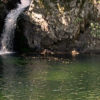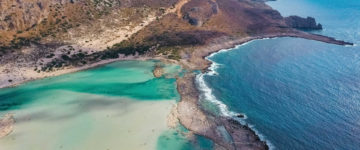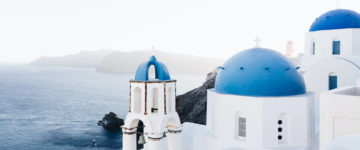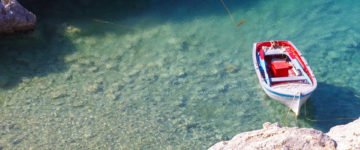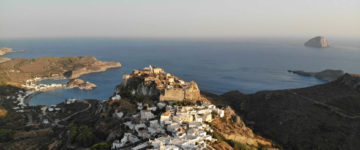
One of Greece’s greenest and most gentle islands, Thasos lies 10km from mainland Kavala. While similar climate and vegetation give the feeling that the island is an extension of northern Greece, it boasts enviable sandy beaches and a forested mountain interior.
Over its long history, Thasos has benefited from its natural wealth. The Parians who founded the ancient city of Thasos in 700 BC struck gold at Mount Pangaion, creating an export trade lucrative enough to subsidize a naval fleet. While the gold is long gone, Thasos’ white marble is still being exploited, though scarring a mountainside in the process. For visitors today, however, the island’s main sources of wealth are its natural beauty and historic attractions. The excellent archaeological museum in the capital, Thasos port, is complemented by the Byzantine Monastery of Arhangelou, with its stunning clifftop setting, and the ancient Greek temple on the serene southern beach of Alyki. Next to the archeological museum stand the ruins of the ancient agora, the commercial center in ancient Greek and Roman times where the foundations of stoas, shops and dwellings remain.
Thasos is an island which lies in north Aegean sea. It is a mountainous place and the highest peak is the Psario or Ipsarion with 1.203 meters high. Access, however, is easy thanks to forest roads. Thasos is characterized by rich plains with olive trees and within an atmosphere of relaxation is a place still untouched by mass tourism which can give a truly unique and memorable holiday.
Thasos population is considered to be, according to the last census, about 13.800 inhabitants. The specific geographic coordinates of Thasos are 40°42’08.3″N 24°38’38.8″E in the Aegean Sea.


